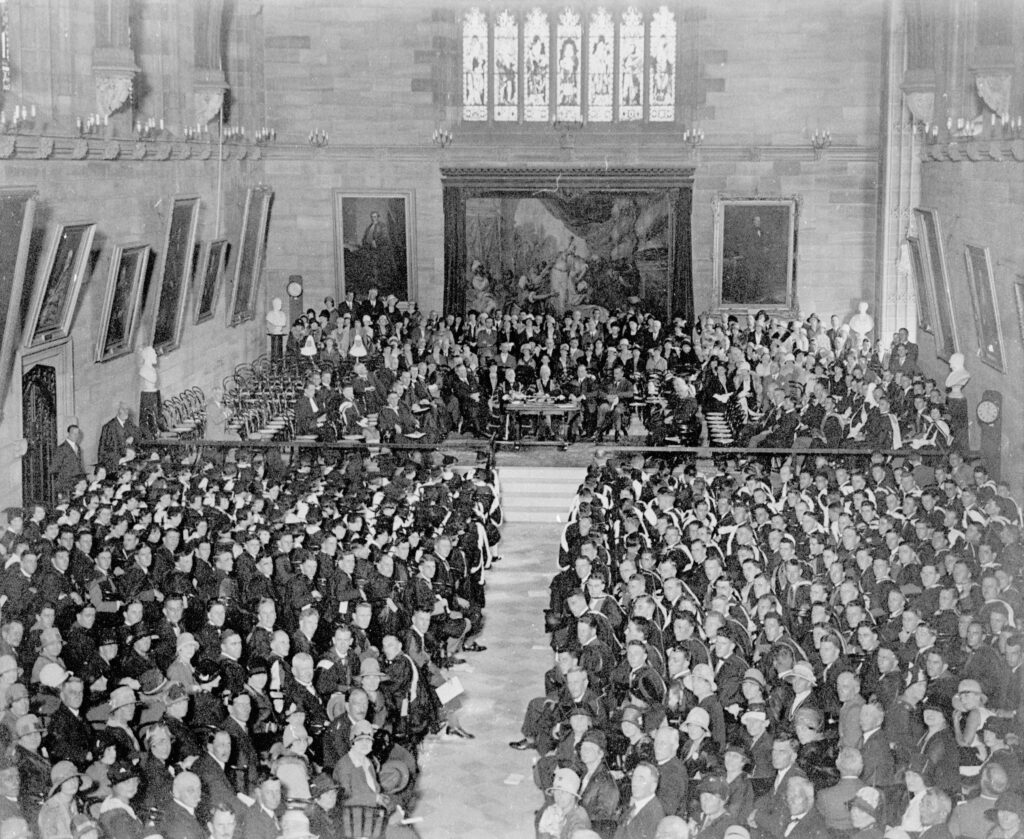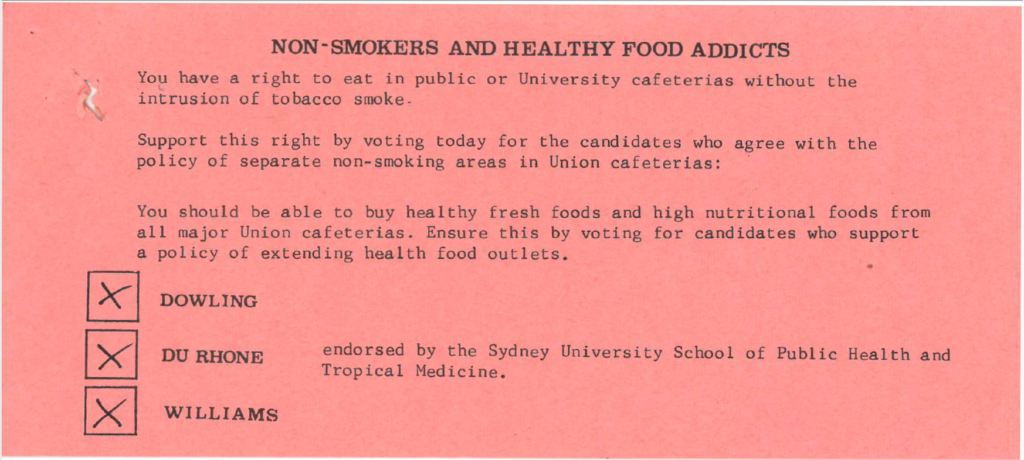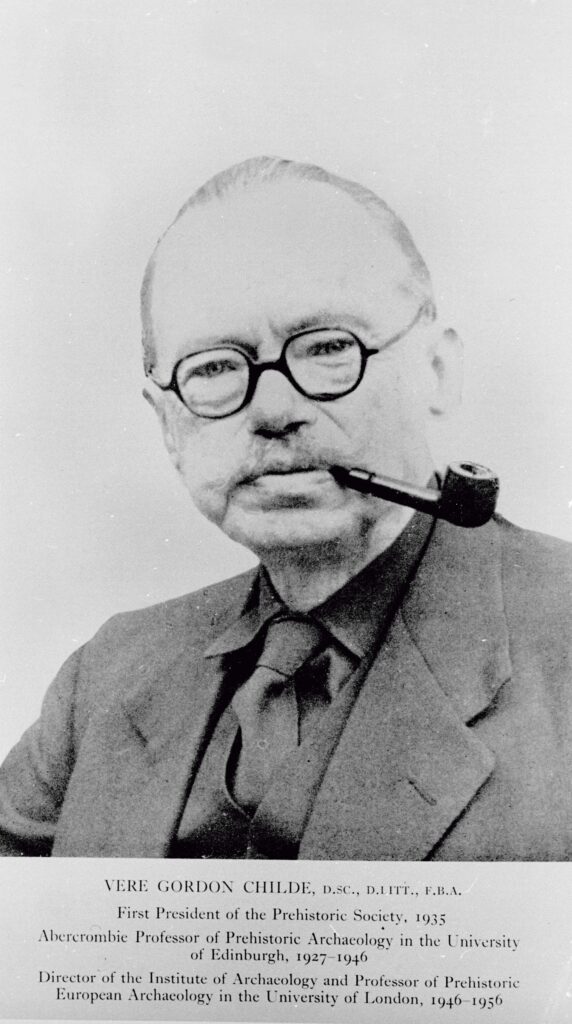The University Archives turns 70 on 3 May this year. To celebrate this milestone, check the blog at the end of each week for the week’s special stories from our collections.

2 April 2024
They Who Strut Their Brief Passage
An internal memorandum, dated 9 May 1929, was circulated among professors, requesting comments regarding the Conferring of Degrees ceremony.
Professor W Woodhouse obliged on 14 May 1929, finding two main issues with the ceremony, “(1) The presentation of graduands rather dragged towards the end, because the distance to be traversed to the dais was ever lengthening. (2) A primary feature of the ceremony cannot be well observed under the existing arrangement. I mean what I may call the exhibition of the graduand who struts his brief passage before the admiring gaze of friends and kinsfolk. In the beginning, starting as we do with graduands in Arts, seated close up, the passage is too short. But those far back in the junior Faculties have too much”. Professor Woodhouse was kind enough to provide some suggestions to remedy the issues, and added that, “Lastly, in case of the Chancellor, to whom the ceremony must be very tiring, I suggest that he stand only to pronounce his formulae, but sit to receive the graduate. Whether the handshake should be retained or be replaced by a salute…I leave undetermined; but it might well occupy our attention”. Professor Ivan G Mackay, on 21 May 1929, echoed Professor Woodhouse’s concerns, “The only thing that struck me was that graduates of Faculties who were seated towards the centre of the Hall, had to walk unduly long way from their seats to the Chancellor and back, and time was unnecessarily occupied in this operation”.
Professor Henry [Samuel Henry Egerton] Barraclough had nine comments, including, “2. The wearing of caps by every candidate must obviously be insisted on. 3. The candidates should lift their caps to the Dean at the foot of the steps rather than try and do it as they walk up the steps…6. As usual the women candidates were notable for their uniformity of dress, and the men candidates for their lack of it – although I think they were better than they used to be. This is largely, I imagine, due to ignorance or lack of thought. I suggest that a personal circular be drawn up…indicating what is advisable for academic dress on such occasions. Many men would be very glad to have a few hints given them. 7. It might be useful to hold a short rehearsal”.
The request for feedback was repeated in 1932, which resulted in Professor Iven Giffard Mackay writing on 18 May 1932 that, “…the ceremony as at present conducted has become too unwieldly and it would be an improvement to hold two distinct ceremonies instead of one. I think it will be generally admitted that last Saturday’s ceremony tended to become wearisome to graduands, spectators and members of staff alike”. Professor Frederick Augustus (FA) Todd, writing on the same day, was slightly more scathing, “The addition of the Gaudeamus to the programme…was not a success. The singing was poor, nor had the song itself any special appropriateness to the occasion. The organist pitched the music too high, many of those present did not know the song, and many of those who knew it would not attempt the reformed pronunciation”.
Professor Barraclough once again provided comments on 26 May 1932, four of which were, “1. Steps should be taken to quicken the pace at which Graduands come up to the dais…4. Definite steps should be taken to avoid the marked number of empty Staff chairs. 5. A little more ceremony in the handing over of the University Medal might be arranged. 6. I think that singing is out of place in such a ceremony. The gathering is a formal Meeting…Also it is against ceremonial practice to sing the National Anthem on formal occasions in the presence of His Majesty’s Representative”. Professor [? Ernest Rudolph (ER)] Holme wrote on 31 May 1932, “1. Fuller attention to be given to the way in which the new graduates wear their academic robes, e.g. (a) trencher caps should not be worn cocked over the left ear, even by women. A few photographs of new graduates approaching the dais would be suggestive of caracatures [sic – caricatures] in comic journals rather than a dignified academic ceremonial. (b) Explanation…or some review…before the ceremony begins, might result in the majority ceasing to wear their hoods wrong side out. One sympathises with their desire to show as much as possible of the beautiful blue colour, but it ought to be checked. The reading of the names should be facilitated by an accurate record of the pronunciation, of family names especially…It is, for example, desirable that the Dean should know which of the seven possible pronunciations of the name Menzies he should adopt…6. The use of Gaudeamus as a congregational hymn on such an occasion seemed not specially appropriate. I would suggest that along with it or in substitution for it, the University War Memorial Hymn be sung…7. Whatever improvement may be possible, the graduation ceremony is one of dignity and good order. Its simplicity is one of its best characteristics and I suggest that our main endeavour should be to simplify it a little more”.
Graduation Ceremony in the Great Hall, 1928 (1928), [REF-00051158]. University of Sydney Archives, accessed 02/04/2024, https://archives-search.sydney.edu.au/nodes/view/79799.
3 April 2024
The King of Uruk
The Gilgamesh Festival of Love, Peace and Harmony, organised by the Gilgamesh Cultural Centre, sought to, “…bring the people of the world together in Sydney in the Year 2000…allowing ethnic and indigenous communities to promote Australia to the world as one united nation of different backgrounds”. This 2.5m statue of Gilgamesh was unveiled and presented to the University by the Assyrian community of Australia on 15 October 2000 as part of the Festival to commemorate the University’s 150th anniversary. It was anticipated that 15,000 people would attend and participate in the unveiling ceremony and associated activities, including, “Historical Parade of Chariots. Music, dancing and singing. Procession of 200 people in Ancient Costumes. Food and Drinks. Release of 7,000 balloons”. The Vice-Chancellor presented the Gilgamesh Cultural Centre’s plans to Senate on 6 December 1999 noting that, “…the Centre wishes to use the premises of the University…to promote multiculturalism and friendship through a program of song and dance involved many different ethnic communities in Australia. It also wishes to honour the 150 years of service that this University has given to the people of Australia generally and to the many thousands of students from different cultures who have passed through its programs by presenting a bronze bas-relief of Gilgamesh, a 3rd Century BC Mesopotamian king revered for his wisdom, understanding and greatness, to the University, and by having the Chancellor address those who attend about the role that the University has played in promoting values similar to those that the Centre espouses”.
A thank you letter was sent to the Centre the day after the unveiling ceremony, “Yesterday’s ceremony that culminated in the unveiling of the Status of Gilgamesh will long be remembered by me for its culture, its excitement, its colour and its true evidence of your Centre’s commitment to the benefits of multiculturalism. It was clear that the serious message of love, peace and harmony that emanates from the heroic story of Gilgamesh was cleverly conveyed by the many different performers as they used modern and ancient means of expression…Certainly my knowledge of the Assyrian culture and of the people who have their origins in the Assyria of old and its more modern territories took a significant leap”.
Bronze Statue of Gilgamesh Near the Old Teachers College (Circa 2000), [REF-00014737]. University of Sydney Archives, accessed 03/04/2024, https://archives-search.sydney.edu.au/nodes/view/34693.


4 April 2024
Calling All Non-Smokers and Healthy Food Addicts
The Union Committee student group called the Watchdog Team, during its 1979 election campaign, distributed pink pamphlets aimed at “Non-Smokers and Healthy Food Addicts”. The Watchdog Team, who felt it “necessary to reiterate” on the back of the pamphlet, were, “…independent of all other teams…we reaffirm that, as our name implies, our role will be to guard the Members’ interests against any sectarian excesses”.
The key electoral promises made by the group included the right to “…eat in public or University cafeterias without the intrusion of tobacco smoke” by introducing a “policy of separate non-smoking areas in Union cafeterias”, as well as “…a policy of extending health food outlets”, allowing students “…to buy healthy fresh foods and high nutritional foods from all major Union cafeterias”. According to their pamphlet, these pledges were endorsed by the University’s School of Public Health and Tropical Medicine.
It was soon revealed, however, that no such endorsement had been made by the School. In a letter to the Registrar, Dr Kenneth W Knight, the Principal of the School, Lindsay Davidson, wrote, “It has come to my notice that some student candidates for appointment to some post in the University Union Committee have published material which claims that their position is ‘endorsed by the School of Public Health and Tropical Medicine’. No approach for such endorsement has been made to me, and I would be the only person able to give it on behalf of the School. I would be grateful if you could arrange for steps to be taken for this literature to be withdrawn”.
On behalf of Dr Knight, numerous letters were sent to the Watchdog Team, as well as the Secretary of the Union, Judy Kelly. In response to Davidson, Dr Knight wrote, “I have now written to the persons concerned, pointing out that you had not given any endorsement of their candidature for election to the Union. Unfortunately the election has now been held, and I do not see that it would be possible to have the material withdrawn”.
Of the three students listed on the pamphlet, only Bachelor of Arts student, Jennifer Dowling, was elected to the Union Committee.
School of Public Health and Tropical Medicine (1967 to 1983), [REF-00035732]. University of Sydney Archives, accessed 04/04/2024, https://archives-search.sydney.edu.au/nodes/view/84290.
5 April 2024
Heretical Views
On 11 April 1957, Professor Vere Gordon Childe was advised that, “…the University of Sydney has asked me to extend to you the invitation of the Chancellor and Fellows of the Senate to accept the degree of Doctor of Letters (honoris causa). Professor Childe wrote back, from the Hotel Mansions in Kings Cross, Sydney, on 15 April 1957 that, “I am peculiarly touched and especially delighted that the University of which I am proud to hold the Bachelors Degree does me the very high honour of inviting me to become its Doctor of Letters honoris causa. Needless to say I accept in all humility and with real gratitude this signal distinction…P.S. You may not have seen that the University of Edinburgh where I was professor for 19 years announced its intention of conferring on me the LL.D. hon. causa last month”.
This honour indicated a marked improvement in the relationship between Professor Childe and the University. On 18 September 1918, Professor Childe informed the University that, “As the University of Sydney has set its face against all freedom of the teacher and ignoring academic merits, enquires into the private views on politics of its professors and teachers, you will be relieved to hear that the enclosed section of my will whereby the University stood to gain about £2,5000 has been cancelled in favor of a more enlightened body (“…the Labour Council of N.S.W. to be used for educational propaganda”). An account of the systematic attempt to prevent the most brilliant classical student ever turned out by the University of Sydney from employing his gifts for the benefits of his native State has also been sent to those educationalists in England”.
This impassioned note came after a letter, where Professor Childe wrote, “As I know that false or exaggerated rumours are current concerning me, may I claim a little of your time to present a true and unvarnished statement of the facts. That I held heretical views on certain questions of national and international importance, I have no wish to deny…I left Oxford in the normal way last June after I had completed the career…Last November, having thus returned to Sydney, I was offered and accepted the post of Senior Resident Tutor at St. Andrew’s College…He [Dr Harper, Principal of St Andrew’s College] stated further that he had interviewed the Warden of the University who had shown him a letter written by me to the High Commissioner for Australia in April 1917 wherein I had stated somewhat baldly my views [“…I have, however, heard a rumour to the effect that to obtain a passport one has to give an undertaking to join the army on arrival in Australia. As I could under no circumstances give any pledge which might involve my helping, however indirectly, in a war which I believe to be destructive to civilisation and true liberty instead of working for an immediate peace, I should be glad to know if I have been rightly informed. If so it will be useless to attempt to go home”]”. Professor Childe included a letter written to Dr Harper, “…I have discovered that University authorities have taken an attitude of very pronounced hostility towards me on account of my political views…As I am unwilling to do anything to hurt the College in any way, I am prepared to offer my resignation…This must not be taken to imply an admission of the principle that the private political or philosophical views of a public teacher are any just disqualification, or that penalisation for such views is anything but the gravest menace to the whole intellectual life of society”.
Despite protest, on 9 July 1918, “It was proposed by Mr. McLaggan, seconded by Mr Stewart that Mr V. G Childe, B.A., B. Litt., should be recommended to the Senate for appointment as probationary tutor in Ancient History. In being put to the meeting this motion was carried”.
Vere Gordon Childe, Archaeologist (No Date), [REF-00054993]. University of Sydney Archives, accessed 05/04/2024, https://archives-search.sydney.edu.au/nodes/view/78952.

Explore the blog for other posts from the University of Sydney Archives and follow us on Instagram.